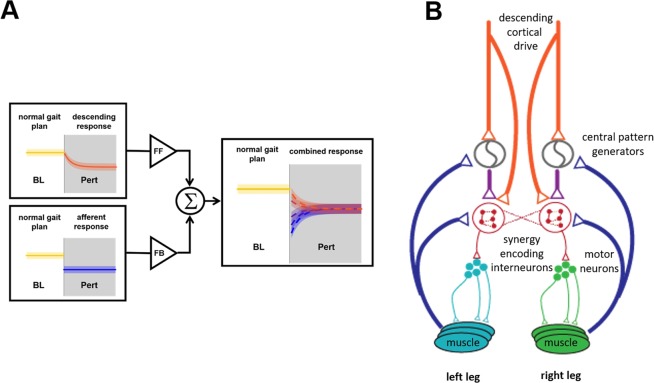Figure 6.
Theoretical and physiological model of the neuromuscular adaptation process as a sum of feedback and feedforward components. The adaptation behaviors that we observed in the similarity plots of Fig. 6 can be explained as the weighted sum of an exponential feedforward (FF) adaptation and a step-like feedback response (FB) (A). By modifying the relative weights of these two components, it is possible to explain all the behaviors we observed in the muscle synergies (a characterization of this model and its fitting on our data are presented in Figs. S9 and S10). At the physiological level (B) our results suggest a direct or indirect (through the rhythm generation parts of the CPGs) activity of both descending corticospinal drive and muscular afferents on the networks of interneurons encoding the muscle synergies in the spinal cord.

